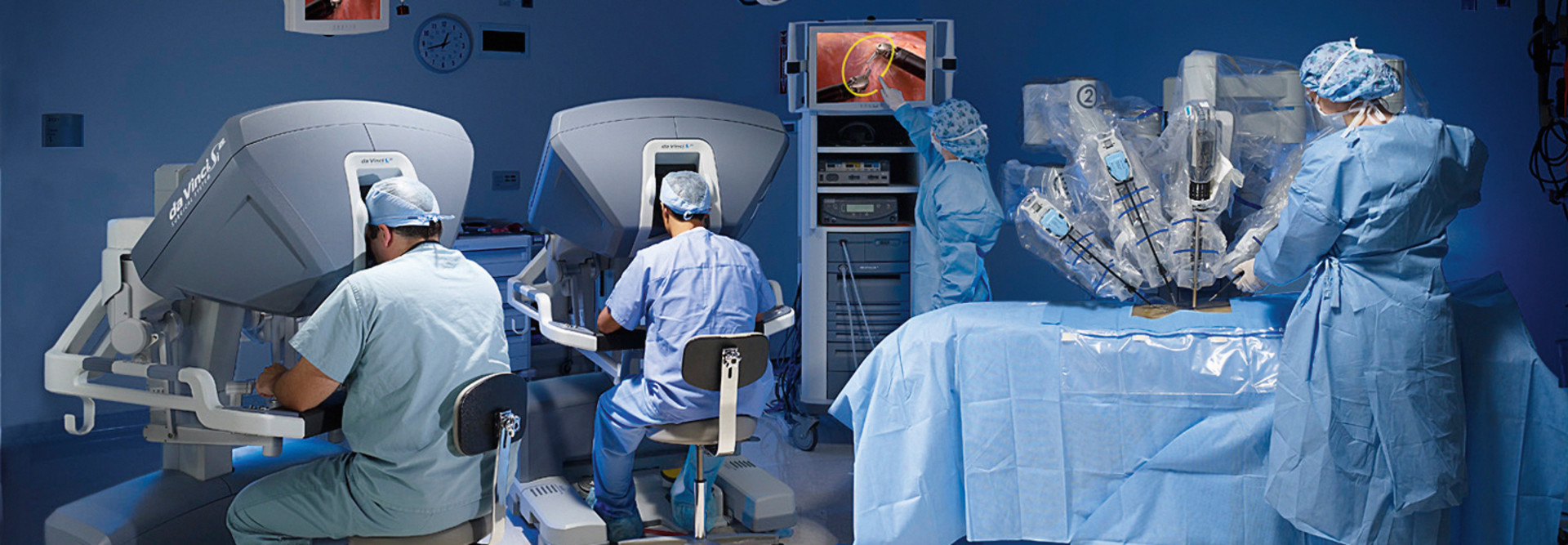Surgical Robots Help Pinpoint Precision
The precision of surgical robots enables doctors to take advantage of the “extreme mapping” of CT scans and MRIs to pinpoint spots to remove, Obias says. “We basically press a button, and it's going to cut out this cancer better than a surgeon’s own hand can do,” he says. “That’s the future of surgery.”
Some robots act as a GPS guide when placing screws during spinal surgery, says Dr. Vipul Patel, medical director of the Global Robotics Institute at AdventHealth in Florida. At the University of Central Florida, where he is a professor of urology, Patel has eight surgical robots, plus another eight for training and education at AdventHealth’s Nicholson Center.
The ability to simulate training and shadow surgeons during procedures will help surgeons improve across the industry, says Mutaz Shegewi, research director for provider IT transformation strategies at IDC. He notes the role mixed reality plays in training for robotic surgery through use of smart glasses such as the Microsoft HoloLens.
“It’s huge on the patient outcomes, health system costs and on the field itself in terms of advancing knowledge sharing,” Shegewi says.
At AdventHealth, Patel adopted robotic surgery as the standard of care for procedures such as prostatectomies because the 9 millimeter instruments are minimally invasive and provide 10 times magnification for hard-to-see areas, he says.
“For prostate cancer specifically, we're working in a very small space,” Patel says. Surgery is generally conducted in a dark environment that can be obscured by blood, he says, so robots enable surgeons to control bleeding and provide illumination.
READ MORE: How hospitals are using robots to clean and deliver supplies.
Robots Provide Other Surgery Advancements
Robotic assistance also can improve other elements of surgery. “I think it has allowed us to perform the procedure in a minimally invasive manner, to dissect more accurately and suture more accurately. And if you can do those things, it makes for a more efficient surgery,” Patel says.
Obias says robotic surgery can aid in suturing for procedures involving the colon. In rectal cancer, robotic suturing allows surgeons to connect tubes back together.
Robotic surgery’s 3D view delivers advantages over 2D laparoscopic procedures, Obias says, adding, “It’s a 3D view, and it’s held by a robot arm, so it’s extremely stable.”
Mortman finds the 3D view of robotic surgery helpful for surgery on spinal tumors. He also uses robotic surgery for benign esophageal cases. “That allows me unfettered access and great visualization without relying on an assistant with shaky hands,” he says.
With technology such as machine learning, robots will continue to gain intelligence. “The robots will get smarter, and they’ll get more autonomous over time,” Patel says. “I can see most surgeries being done robotically in the future.”











